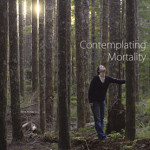
We Californians are used to fire.
We watch the news and our hearts go out to the firefighters’ seemingly impossible task of containing a fire that rages through acres of uninhabited forest.
We hold our breath when fire rips through a wooded area where homes are tucked, and we grieve for the residents.
But we who live in Northern California have yet to get our arms around the tragic firestorm that recently leveled entire communities, took lives and displaced so many.
Where we live is sacred to us, no matter how small. “Home” isn’t just a place, it is also a feeling. We always assume “home” will be there for us at the end of the day. It is a place where we relax, find comfort, and feel safe. It is our anchor. How often do we say to ourselves, “I can’t wait to get home?”
This morning I read Francis Weller’s post, “Everything is Burning.” Francis is a Northern California therapist who lives Santa Rosa – one of the communities that was engulfed in flames. He writes beautifully about the “soul-shaking” trauma that hit Sonoma and Napa counties, and he suggests how to cope with what we can’t control. Take a few minutes to allow Francis to open your heart.
Everything is Burning, by Francis Weller
Post: 10/23/2017
These last few weeks have seen radical changes in the physical and psychic landscape of Northern California. The fires that began late Sunday night, October 8th, quickly engulfed homes and dreams, woodlands and security. Many of us awoke in the middle of the night to the acrid smell of smoke, sensing that something was wrong. Only later, with the dawn light, were we able to see the extent of this disturbing truth.
The German word for trauma is “Seelenerschütterung,” which means “soul-shaking.” Clearly, our souls have been shaken by this catastrophic event. Everyone has been affected, whether we lost a loved one, a home, a beloved pet, our place of employment, a trail that we cherished or simply our sense of faith in the ordinary assurances of daily life. No one in our community has been spared the sorrows that have fallen upon us like ash. We are living in a collective field of sorrows that will take a long, long time to metabolize.
In some northern European cultures, the season of grieving the loss of someone close was known as a period of living in the ashes. This extended time was an era of descent, a movement into the underworld where the bitter tincture of grief was meant to be churned and metabolized into a medicine for the community. It was a sacred time, a time-out-of-time, in which the primary work was digesting sorrow. We have felt and seen the swirl of ash in the air. We are all being asked to do the sacred work of transmuting loss into wisdom.
How are we to respond when life confronts us with overwhelming circumstances? How can we hold all we are feeling when the source of the feelings is far beyond our ability to control? How do we recalibrate our inner lives to further the healing reflex of psyche in times of trauma? Here are a few offerings for a medicine kit for tending our souls during traumatic times. And who isn’t living in traumatic times?
1. Practice self-compassion. During periods of stress, we often fall back on old patterns of relating to ourselves and the world. We can be harsh and critical, withholding and brittle, especially with ourselves. Self-compassion offers us the opportunity to hold what is vulnerable with kindness and tenderness, allowing these places to remain soft and open. Times of great uncertainty call for a level of generosity to ourselves that helps to offset the effects of trauma that can often envelop our emotional body. This must be our first and primary intention: to hold all that we are experiencing with compassion; to offer a safe place for our fears and grief to land.
Self-compassion is the foundation for befriending our lives. It is the great work of the heart to behold our life as eminently worthy of compassion and love. We will not figure our way through this maze of grief and suffering. We must, instead, learn to turn toward our sorrows with kindness, tenderness, and affection. Lean in. Offer love, a touch of affection. Nothing ever heals in an atmosphere of judgment or criticism. We contract and get small under such conditions. We open and soften only when the space around us invites revelation and connection.
A working definition of self-compassion is that it is the internalized village. Imagine how a dear friend would respond to your pain and suffering, fear and grief when they arise. While we can be impatient and judgmental about our inner states, a good friend would offer us a holding space big enough to be with what it is we are experiencing and touch it with mercy. We are all worthy of compassion and when we can turn toward our pain or grief with kindness, we open our hearts and grant the conditions necessary for healing.
2. Turn toward the feelings. There is no bypass or strategy of avoidance that can help resolve the difficult emotions we will encounter. Turning toward our suffering is essential. We must not only endure our times of pain and sorrow, hoping to get to the far shore of them, we must actively engage them and feel them fully. This move takes great courage. It is hard to open ourselves up to the painful emotions that await us without an adequate level of compassion and support.
There is a premise in the alchemical tradition that says we must keep the materials warm for them to ripen in the vessel. If we do not, our sorrows and fears will harden and congeal, making movement impossible. When we hold these challenging emotions with affection, concern, compassion, and interest, they stay flexible and fluid, capable of change. We keep them warm by holding a steady vigil with these difficult guests and not turning away and neglecting what these pieces of our soul life need from us. When we offer this kind of devotion, our sorrows and fears will change. As the poet, Rilke reminds us, “No feeling is final.”
To feel it fully, however, we require the arms and hearts of others, tethering us to a wider circle of belonging. The weight of grief and suffering that we are facing is more than we can hold in isolation. Be willing to share what has gathered in your heart with another. Call three or four friends together and share the communal cup of loss that we are all feeling in this uncertain time. Be mindful of how much conditioning we have received that tells us to go it alone; to not need anyone or bother anyone else with our struggles. Challenge those thoughts. “This is,” as one of my teachers said, “the solitary journey we cannot do alone.” Coming into the company of others reassures us and adds to the internal feeling of safety.
3. Be Astonished by Beauty. Trauma has a profound impact on our feelings of aliveness, often generating a state of numbness or anesthesia. This state protects us for a time from having to encounter the raw, searing emotions that often accompany trauma, but it also dulls our sensual engagement with all that surrounds us. At some point, we will be required to meet the painful emotions and the sediment of sorrows that have accumulated around us. Beauty’s allure helps to open the full aperture of the heart. Sorrow and beauty side-by-side. The soul has a fundamental need for encounters with beauty. It is a central source of nourishment that continually renews our sense of vitality and awe.
Beauty calls us outward into the world. It quickens the senses, awakens the heart and pulls us deeper into an intimacy with the folds of the world. The poet Robinson Jeffers said we are meant to “fall in love outwards” with the astonishingly beautiful world that surrounds us. Immerse yourself in beauty. Bring flowers into whatever space you occupy, along with fragrances that enchant and soothe. Play music that touches your heart and sing along. Read the poetry of Akhmatova, Dickinson, Machado, and Neruda. As Rumi said, “Let the beauty we love, be what we do.” The felt encounter with beauty increases our sense of ease and connection.
4. Patience. Healing from trauma takes time. Patience offers a courtesy to the vulnerable pieces of soul life that have been splintered by the presence of trauma. Knitting a bone takes time. Mending the soul takes even longer. Be patient with your process. There is a deep wisdom in the soul that knows the value of going slowly. Stepping out of the manic pace of modern culture is essential to regain our footing in the world of soul. Patience is a discipline, a practice that offers assurance to the places of vulnerability and a ground for absorbing the benefits of our efforts. As James Hillman noted, “In your patience is your soul.”
Patience creates a state of spaciousness where the deeper rhythms of soul can re-emerge. Patience also invites a creative emptiness where the unimagined can arise. We are not the authors of our healing. Our task is to generate a space of receptivity to dreams, images, insights, intuitions, inspirations, all through the hospitality of patience. ——————————————————
The Buddha said, in one of his sermons, “Everything is burning.” In these extreme times, the truth of impermanence strikes at the very heart of our lives. Everything we hold dear—loved ones, homes, photos of family and ancestors, objects that hold a sense of the sacred—can all be gone in a flash. What remains are the bonds of love and friendship. What we witnessed during the smoke-filled days following the onset of the fires, were acts of kindness, gestures of generosity and a recognition that our lives are mutually entangled with one another. May this spirit endure. May we find the courage we need to keep our hearts open to one another and to this wild, fragrant earth. Stay safe.






























